Relay (MFA Thesis Project)
an ongoing exploration of assistive robotic furniture
About this project:
Context:
SVA / 2018
Type:
- MFA Thesis
- Assistive Technology
- Disability
- Robotics
- Furniture Design
- Interaction Design
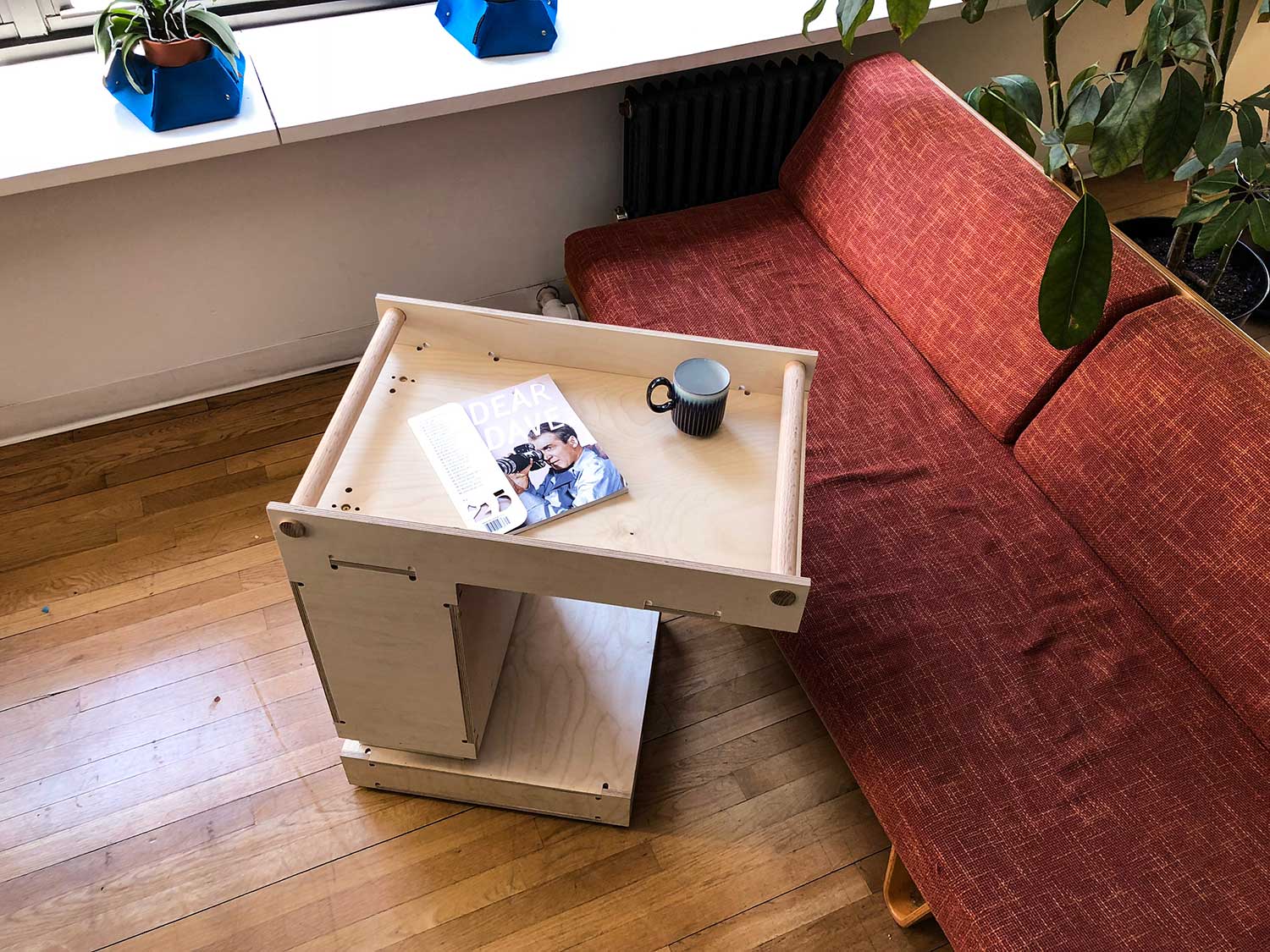
The world isn't designed for everyone—but it should be
According to the US census, 1 in 5 people live with a disability in the US. But most of our designed environments—city streets, home furnishings, store interiors—do not take into account disabled people, or do the bare minimum to accommodate them.
After living with a friend who has limb-girdle muscular dystrophy, I saw first-hand how even small changes in the home environment could have a huge impact on his mobility and ability to carry out daily household tasks.
For my MFA thesis project at SVA, I wanted to explore what interventions could be designed for disabled people to be able to live more independently in their homes.
This project was featured on Fast Company, Apartment Therapy, and Treehugger.
Existing products are medical
There are, in fact, several products designed for people that accommodate a range of disabilities.
However, they are almost always designed as medical devices. After all, durable medical equipment can be covered by insurance and Medicare and Medicaid, making it more desirable. The downside of this is that when introduced to the home, these medical products create the feeling of living in a hospital.
Technology is also changing the game. There are assistive robots being developed that can carry out simple tasks for their owners, and help with mobility as well.
Being humanoid, the complexity and cost of these robots means that they are many years away from being affordable to the average person at home.
They also tend to be a little bit creepy, to me.
But what if these robots were simpler, more like the assistive devices? What if they were invisible, like furniture? What if they actually were furniture?
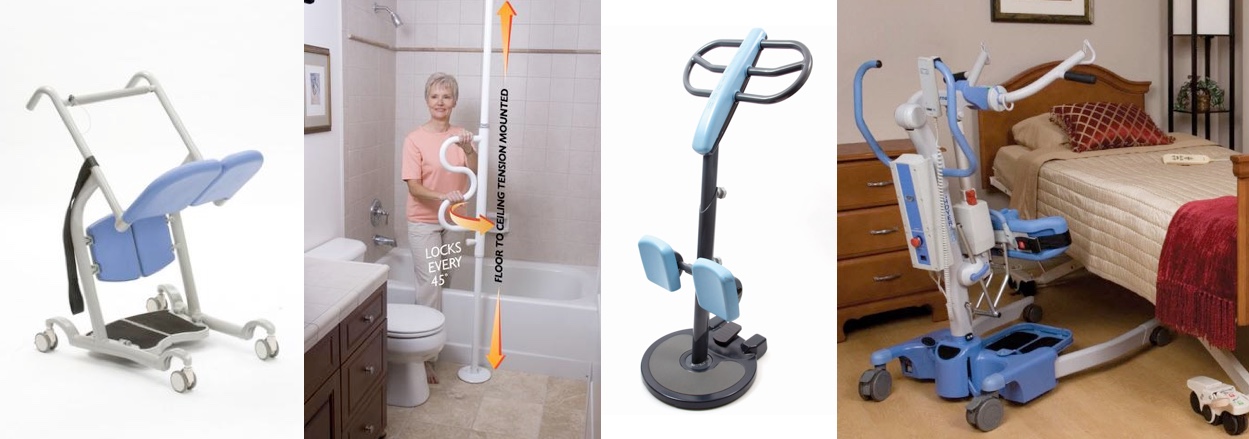

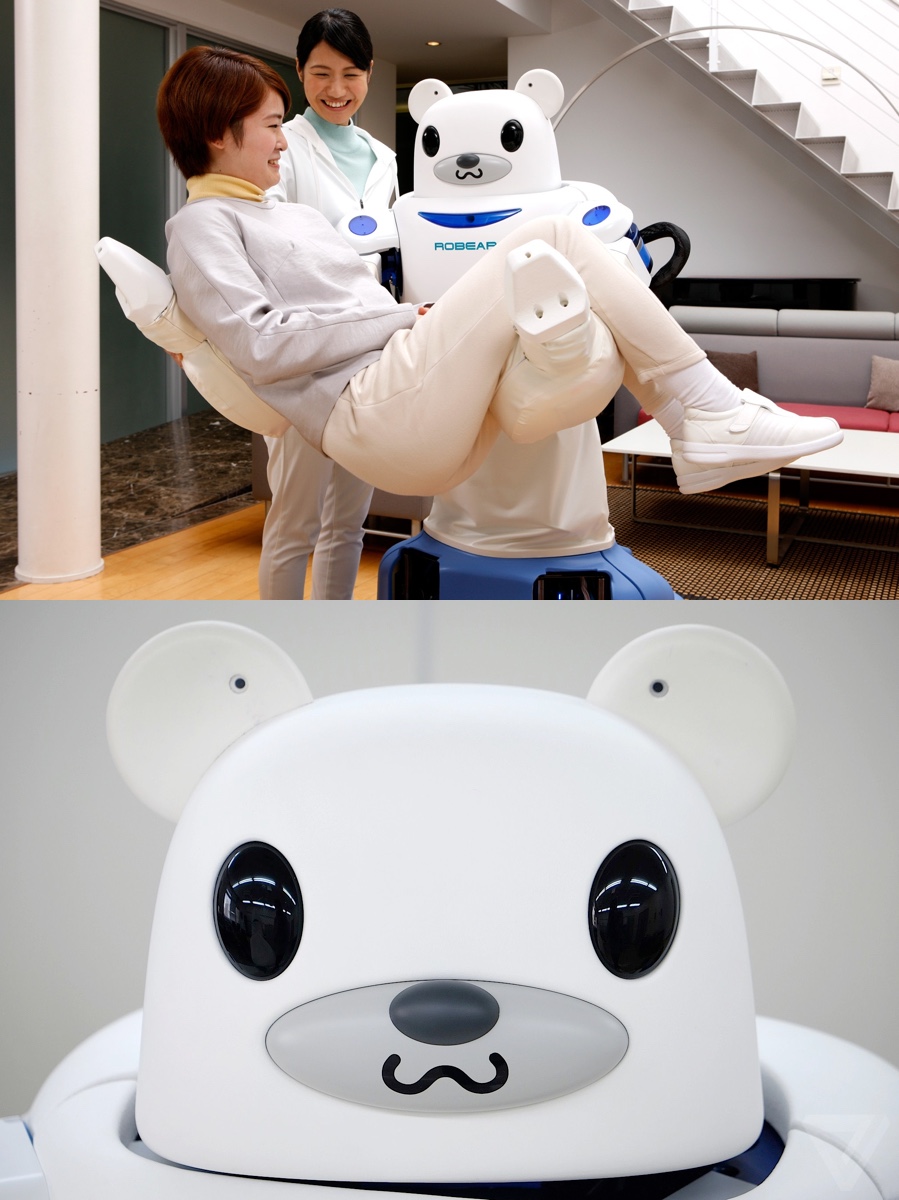
Enter Relay: robot assistants disguised as furniture
Relay is robot furniture designed to help disabled people live more independently in their homes. This could mean different things for different people. Relay furniture could help carry items around the house, support the weight of a person (like a walker), open doors, and possibly be useful in emergency situations.
The idea was that Relay would be a new brand of furniture, with products that are customized for individuals' own wants and needs.
With my friend who has LGMD, we designed an autonomous cart that would carry heavy items for him, as well as help him stand up from the couch. The cart would respond to simple voice commands, like "Come here" or "Lift up," and function as any other piece of furniture would otherwise.


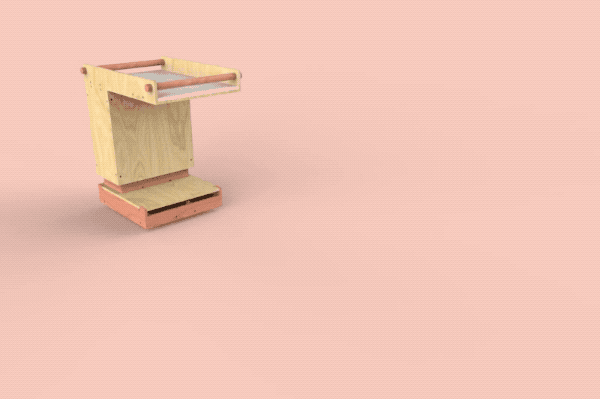
Through conversations with wheelchair users at the Brooklyn Center for Independence of the Disabled, I mocked up other possible versions.
One person wanted a mobile work station that could come to them for their "bad days" when getting out of bed is more of a challenge than usual.
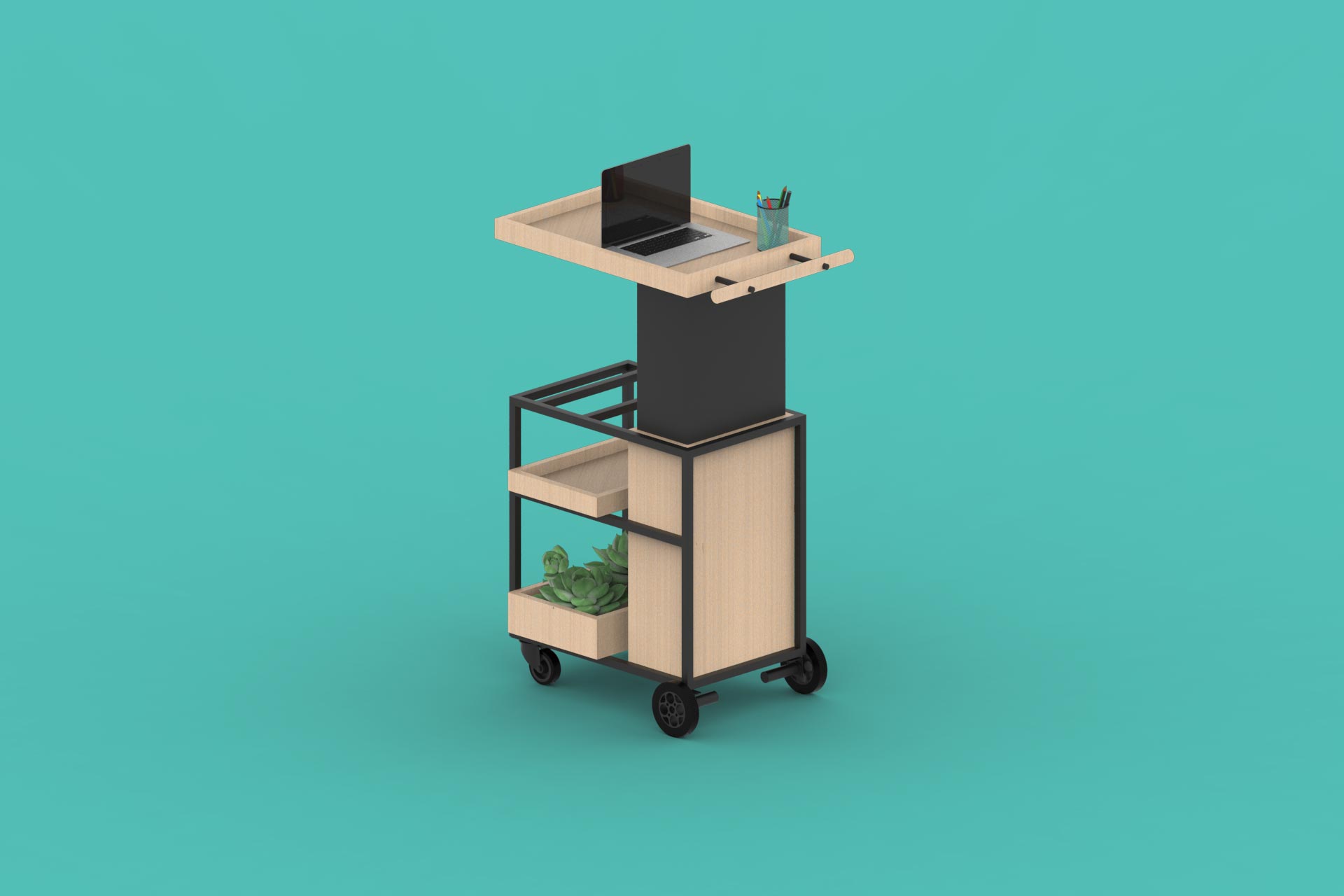
One person wanted something that could simply be a smart walker.
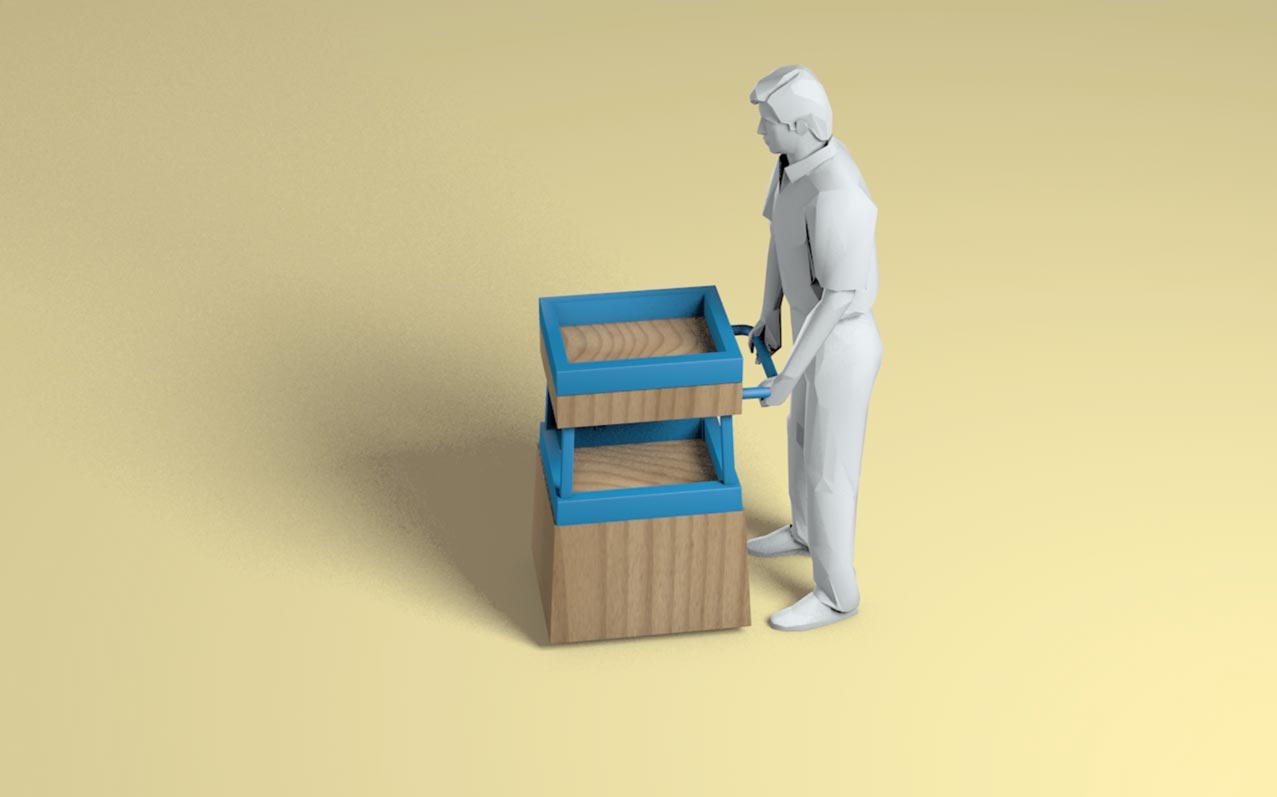
One person lived alone and wanted the furniture to pick her up if she ever fell out of her chair, so that she wouldn't have to call emergency services and give her landlord an excuse to evict her.
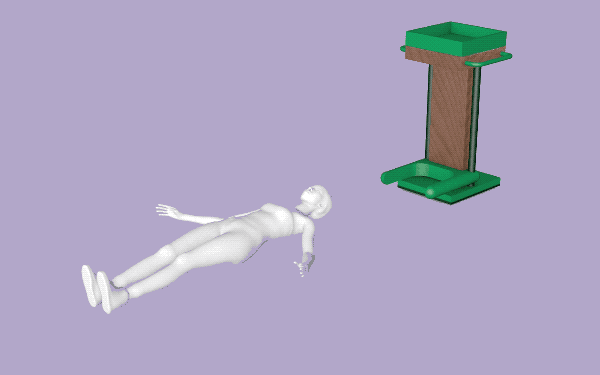
Process
I didn't start out thinking about robots or furniture. I began my thesis exploring "augmented humanity" or how we could embed technology in our bodies to grant us new abilities.
My research led me to explore the world of prosthetics and orthotics. Most of us are familiar with the idea of a prosthesis: a device that replaces a body part, like a prosthetic arm or leg. According to Wikipedia, an orthosis is "an externally applied device used to modify the structural and functional characteristics of the neuromuscular and skeletal system". An exoskeleton is an example of an orthosis.
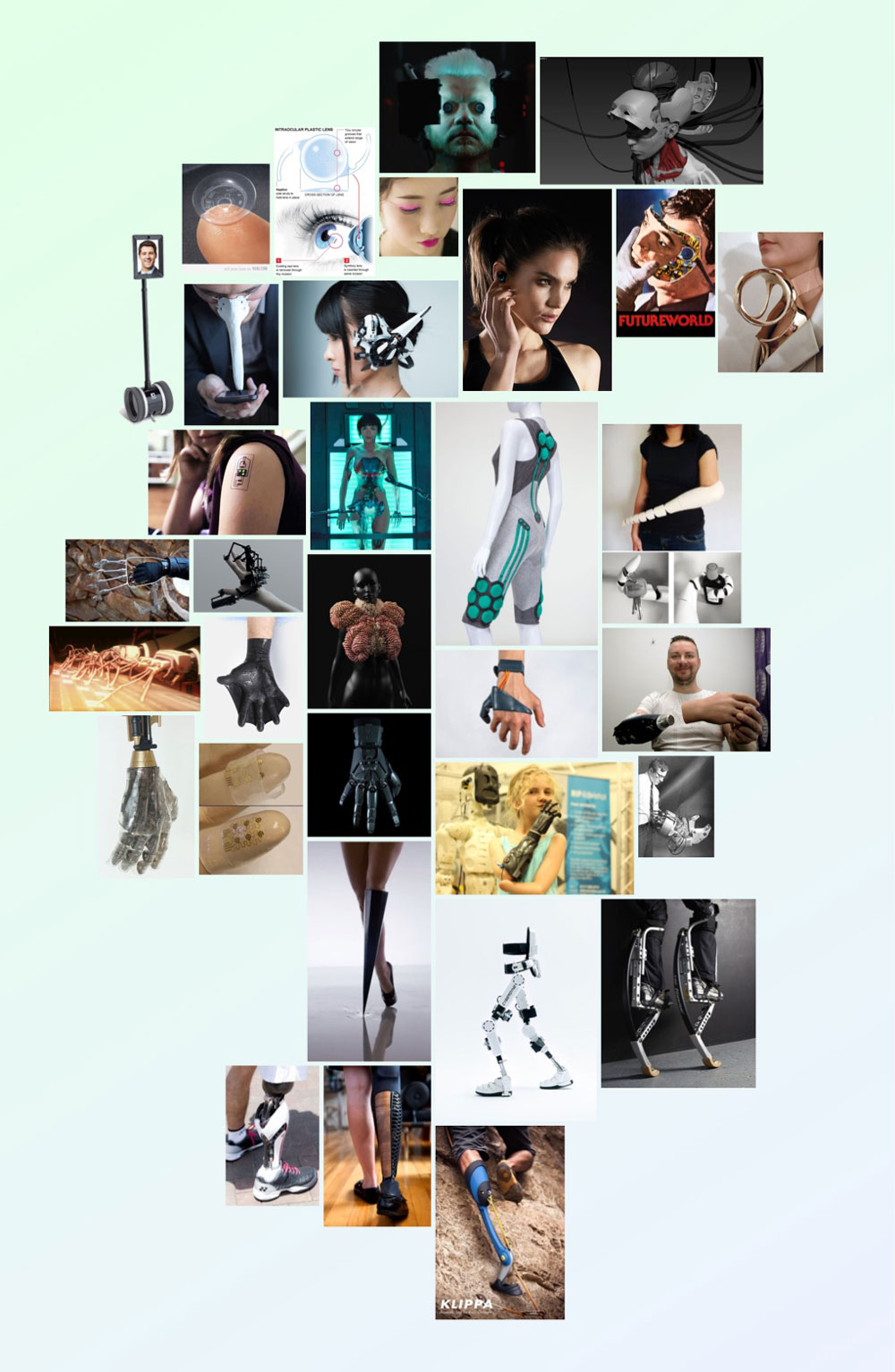
Exploration 1: Super Humans
In my research, I found that the two largest groups most concerned with augmented humanity are people with disabilities, and people who work in extreme environments like factories or the military. A smaller group of "body hackers" known as grinders is also pushing the limits of regulation around inserting technology into our bodies.
What would happen once these fringe technologies become mainstream consumer products? One way to speed up that process could be to productize existing tech and display it in a retail environment alongside other consumer electronics.
This is where the idea for Super Humans came from. Super Humans is a store where hearing aids and AirPods live side by side. If prostheses and orthoses were as ubiquitous as bluetooth speakers and kitchen tools, perhaps the stigma around them would dissolve, and the higher demand for them would mean that they were produced in larger volumes, and the competition of the market would drive down prices.
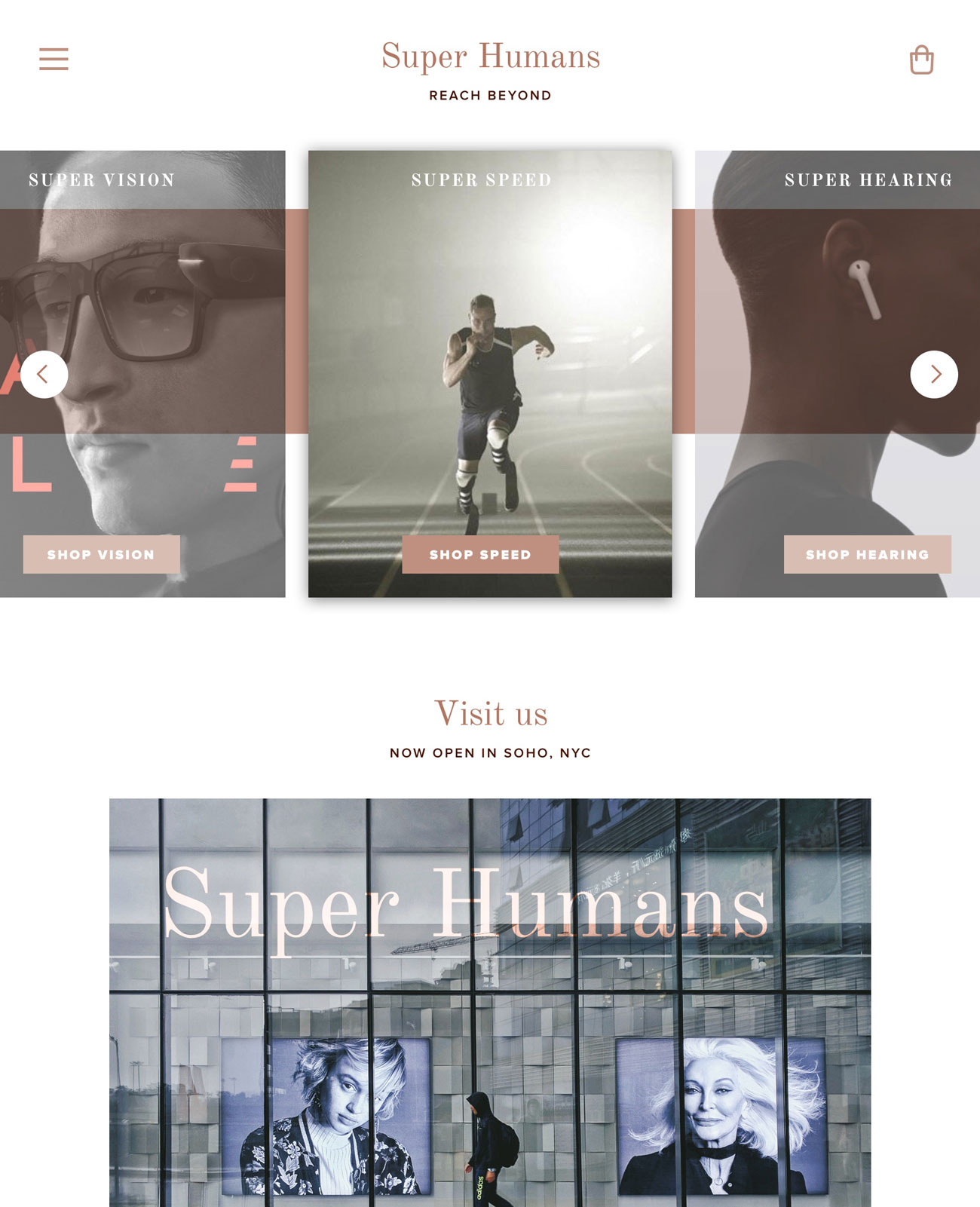
Exploration 2: Elbow-Up
I wanted to build something, so I started looking for use cases. I spoke to my friend with LGMD about exoskeletons, and he had an idea for an arm brace that would assist him with lifting heavy objects. It could store potential energy from his arm's natural extension (hanging at his sides) and then use it to give a little boost when lifting things during flexion.
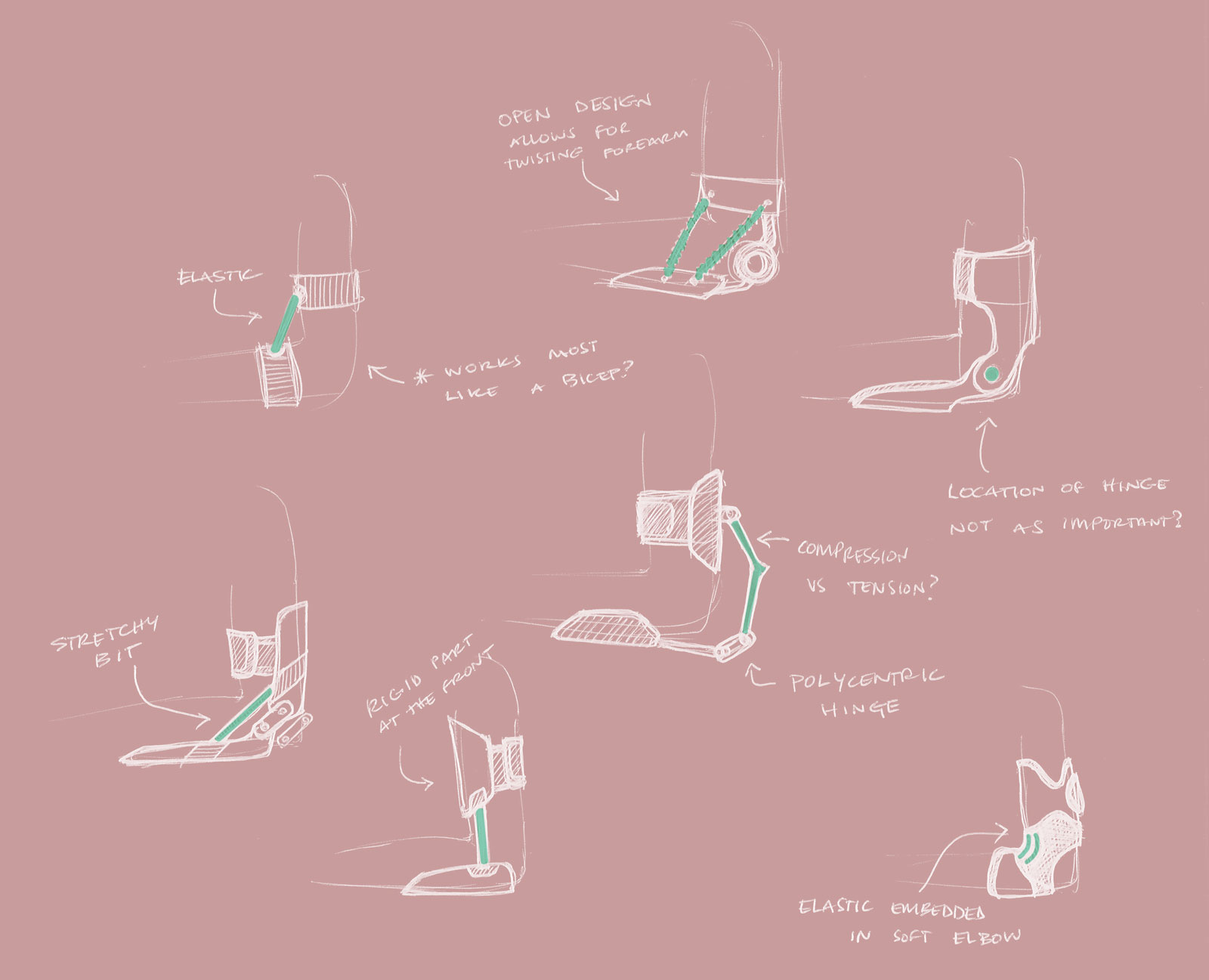
I built three prototypes. The first was a quick proof of concept using cardboard, felt, and elastic bands.
Testers found that it did indeed give them a little boost, but not enough that they felt it was worthwhile.
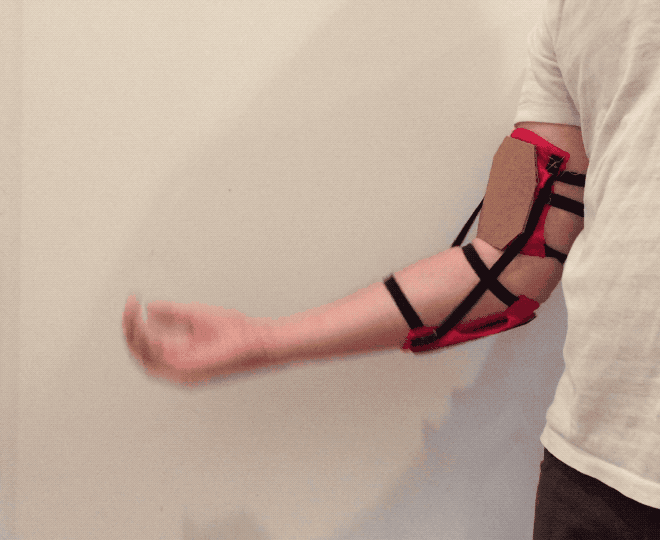
I designed frames to 3D print that could accommodate different elastic materials. While I didn't get very far with that part of the testing, I did learn that the brace should be comfortable and easy to put on and off.
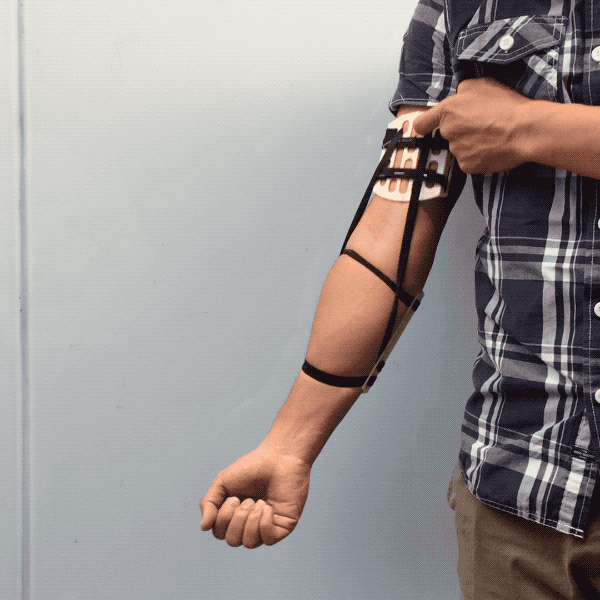
For an advanced prototype, I decided to use pneumatic springs to store and release the energy. I used the type of pistons found in cabinet doors, and while the mechanics worked, the springs were far too stiff for practical use.
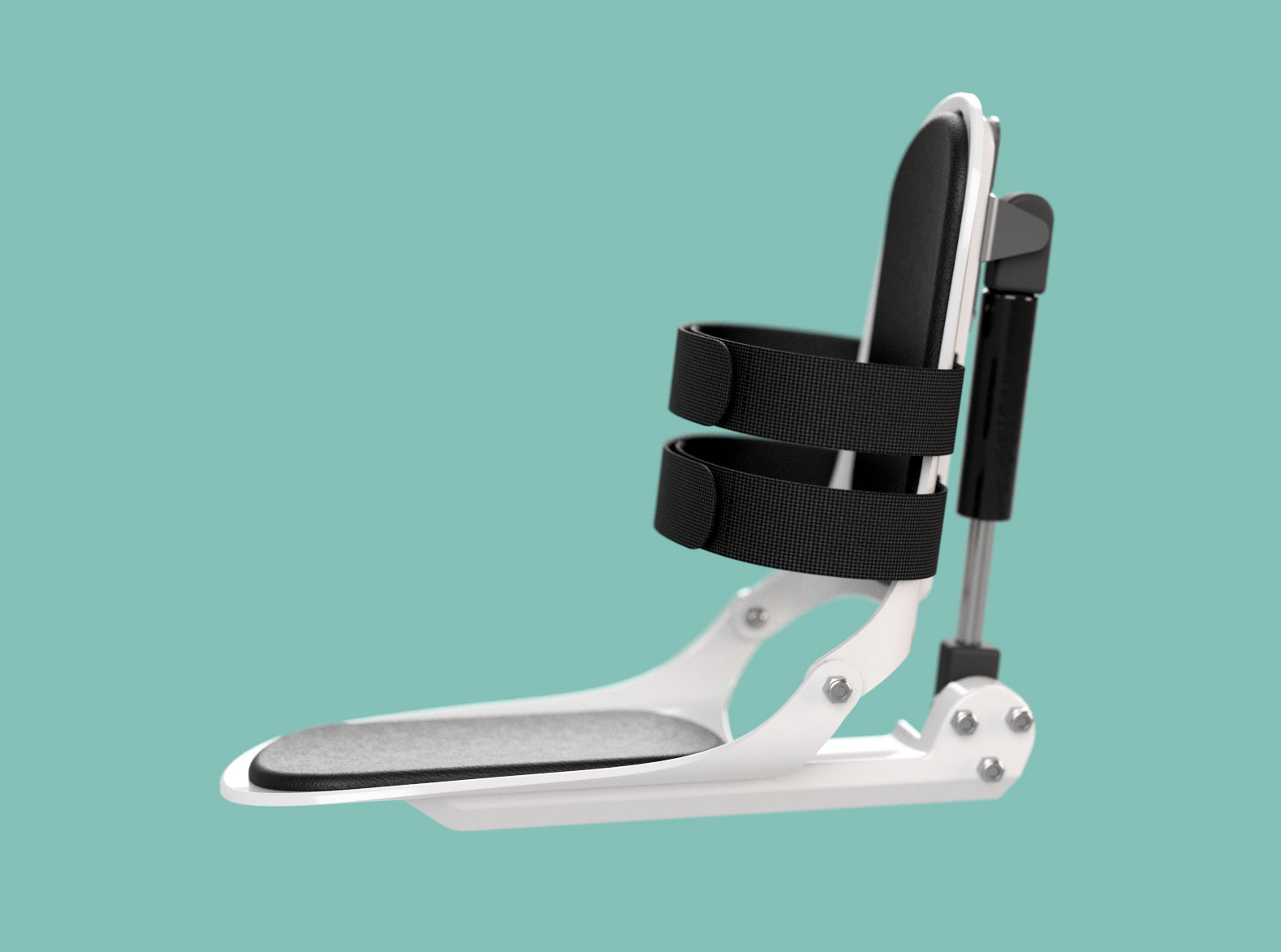
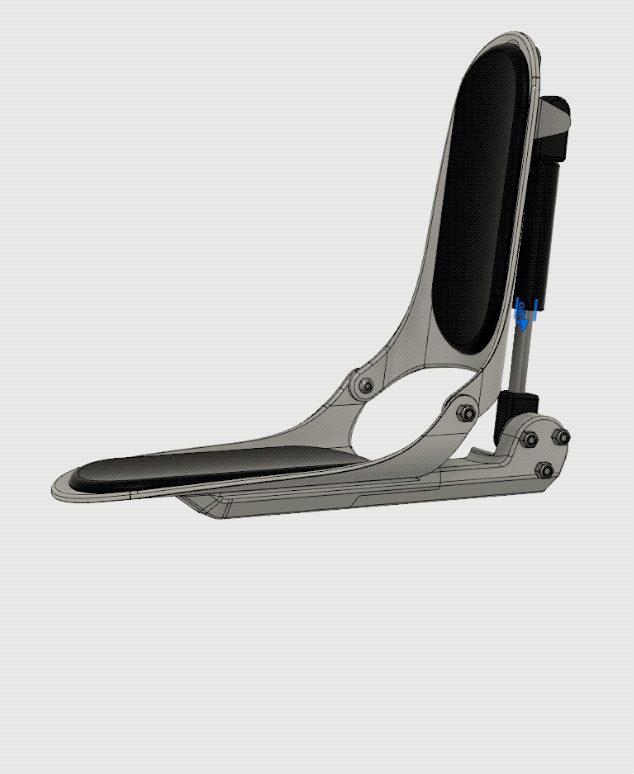
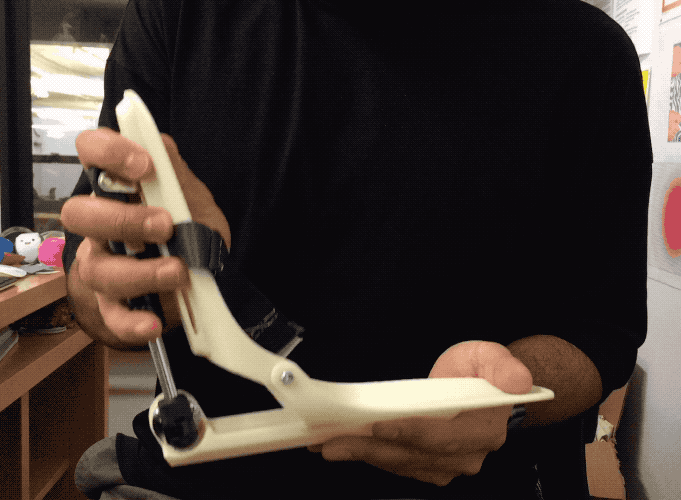
Exploration 3: the built environment
At around this point, my research led me to be more interested in designing for disability rather than human augmentation. I found that there is so much opportunity to create something with impact in this space, since it is often overlooked by designers, marketers, business folk... pretty much everyone but disabled people themselves.
I learned about disability theory and the different ways of thinking about disability.
The most common mental model people have is the medical model. This is the idea that disability is linked to a person's physical body—that a disabled body is a "broken" body that needs to be fixed or cured.
While finding cures for disabilities is still important, there is another way of thinking about disability. The social model is the idea that people are disabled by the society they live in: that there are systemic barriers that disable people whose bodies don't adhere to normative standards. Put simply: the social model is the idea that a person who uses a wheelchair is only disabled because the world is full of stairs. And those stairs were a design decision made by us.
Opportunity: furniture
I looked at immediate opportunities to redesign our built environment. My thought was, rather than embed technology in human bodies to give them superpowers, could I give humans superpowers by giving them the ability to influence their surroundings?
Furniture jumped out as something that was ubiquitous and yet largely unchanged in terms of functionality. What if our existing furniture could do more?
My research led me to robotic furniture, which researchers at Stanford University and the MIT Media Lab have experimented with.
Could I build a furniture robot? What would it do?
I had a phone call with my friend who has LGMD to share my idea and see what he thought. We brainstormed some pieces of robotic furniture that could work for him, and I decided to start building.
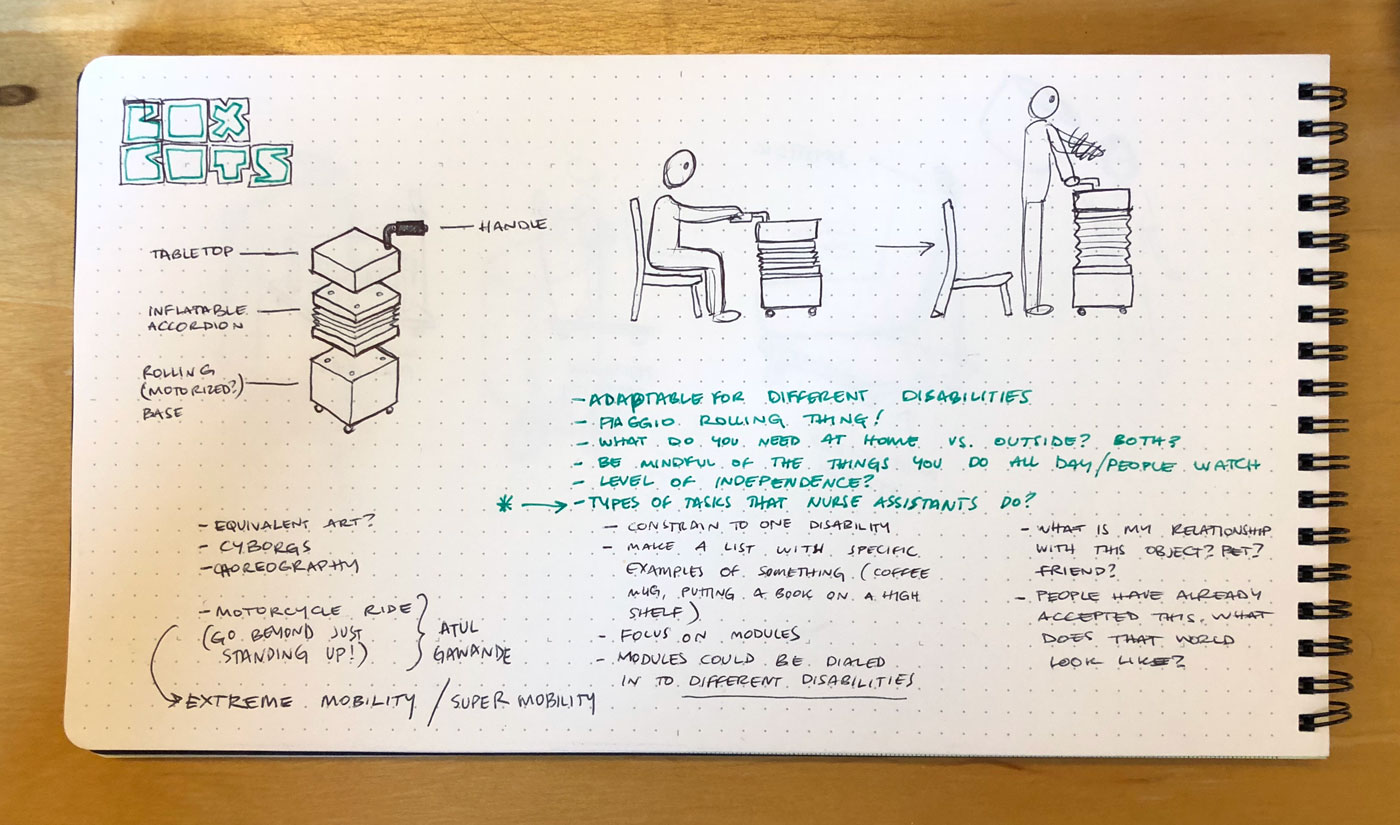
Again, I made three prototypes. The first was a small-scale robot to figure out the software and hardware I would need to go full-size (and full-cost!). Using a Raspberry Pi as the brain and ROS as the software, I made a small robot platform that I could control with my computer.
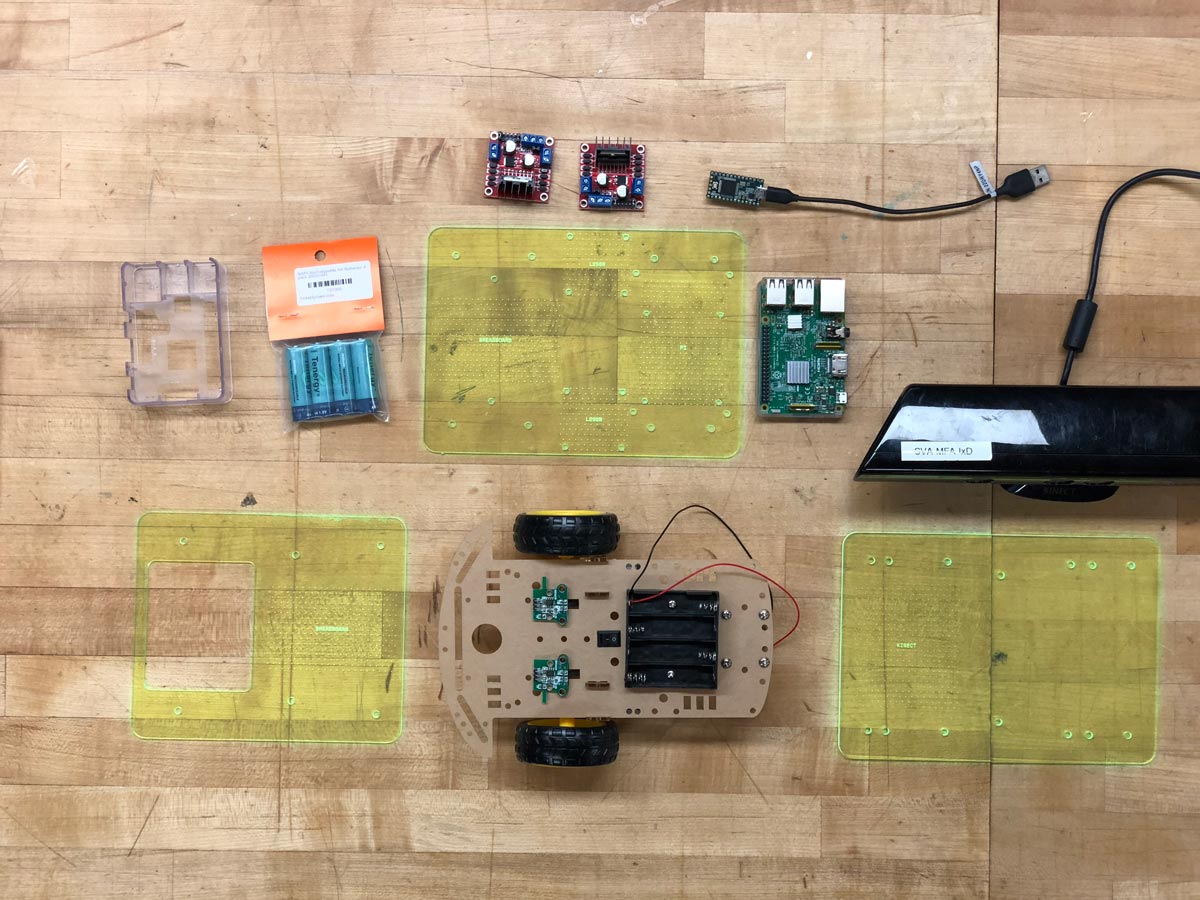

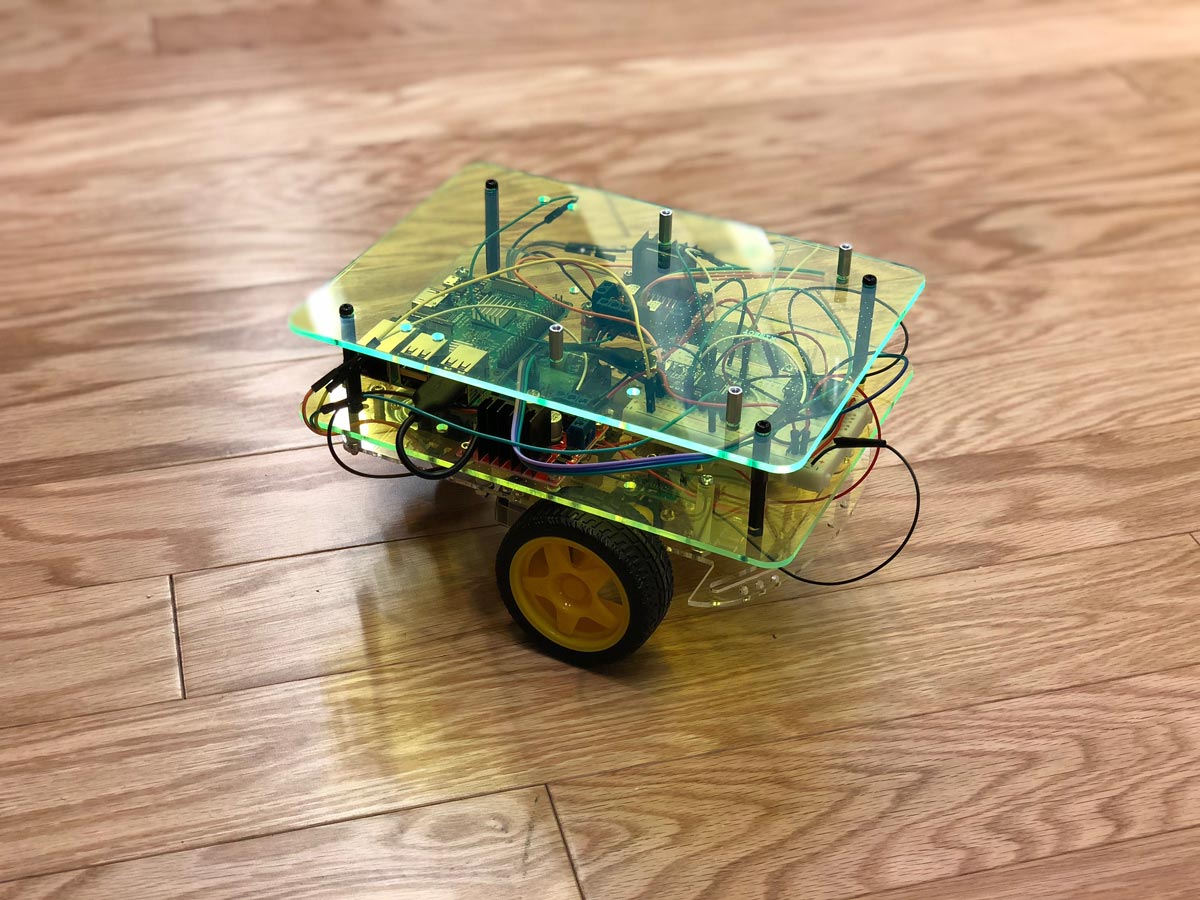

The second prototype was intended to cheaply and quickly test people's reactions to robot furniture. I built a low platform that I could put furniture on and drove it around the studio to see how people responded.
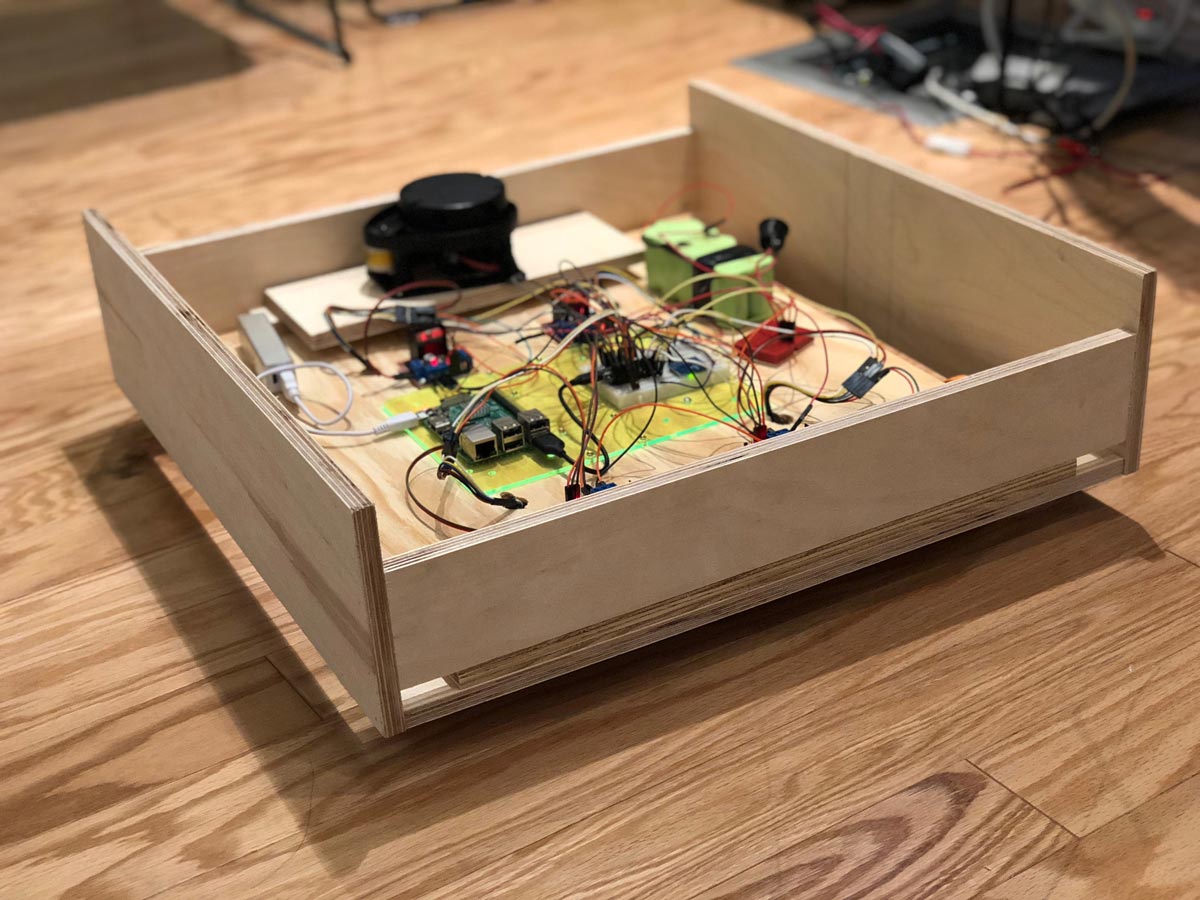
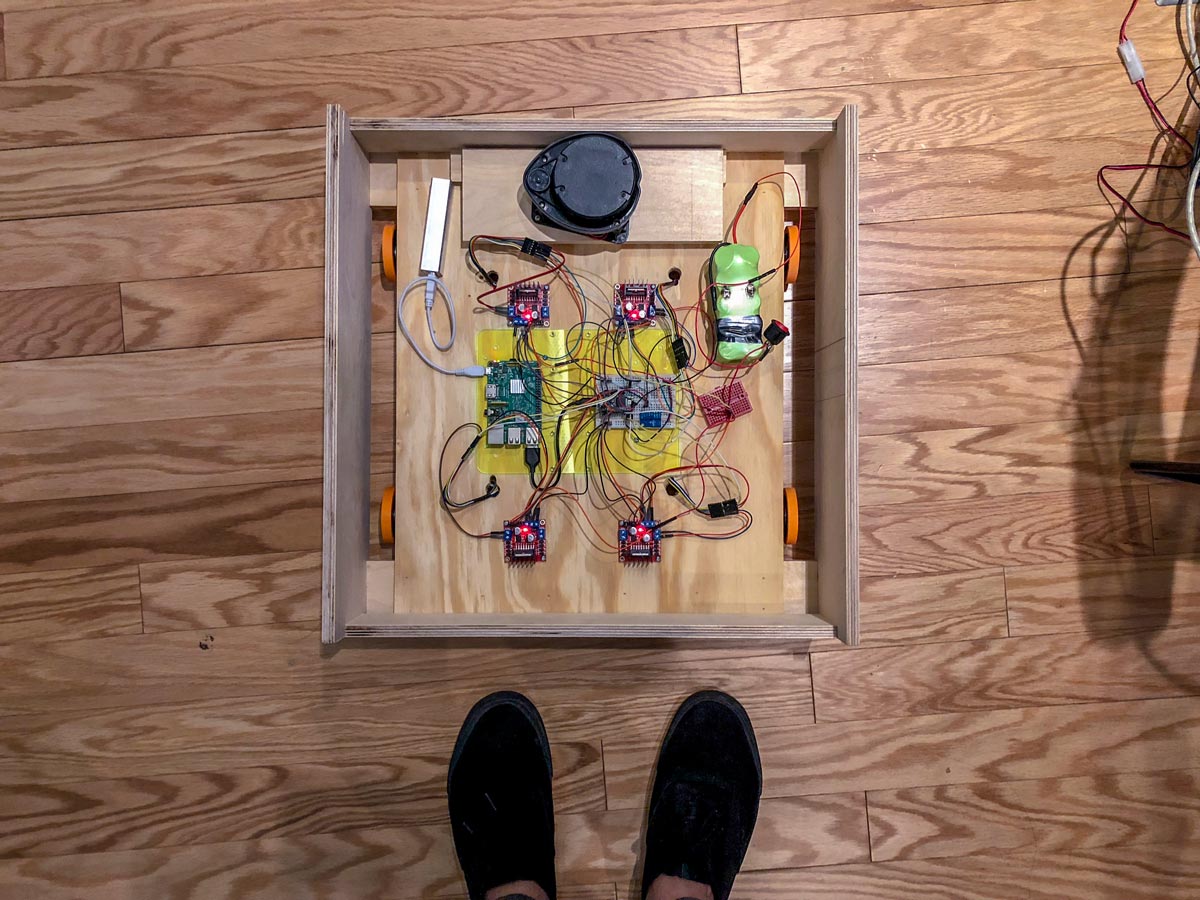

At this point, I wanted to get the project in front of more potential users. I was lucky enough to happen upon the Brooklyn Center for Independence of the Disabled, and I managed to get an hour with some of their clients and staff to talk about what I was doing and get their feedback.
My last prototype aimed to be a fully-functional piece of furniture. I optimized it for speed and cost, designing it to be cut out of a single sheet of half-inch plywood on a CNC router. The base was mostly the same as I had before, but I added a height-adjustable platform and grab bars.
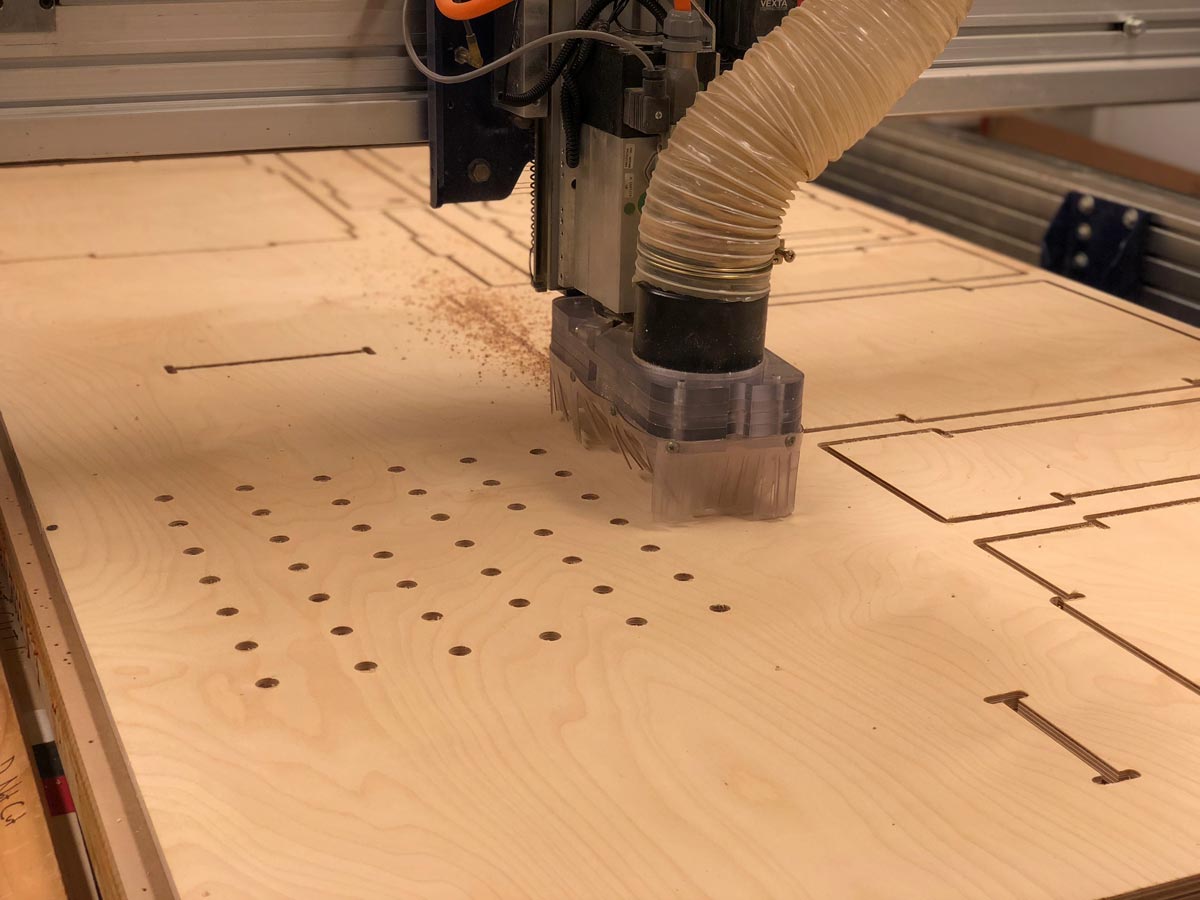
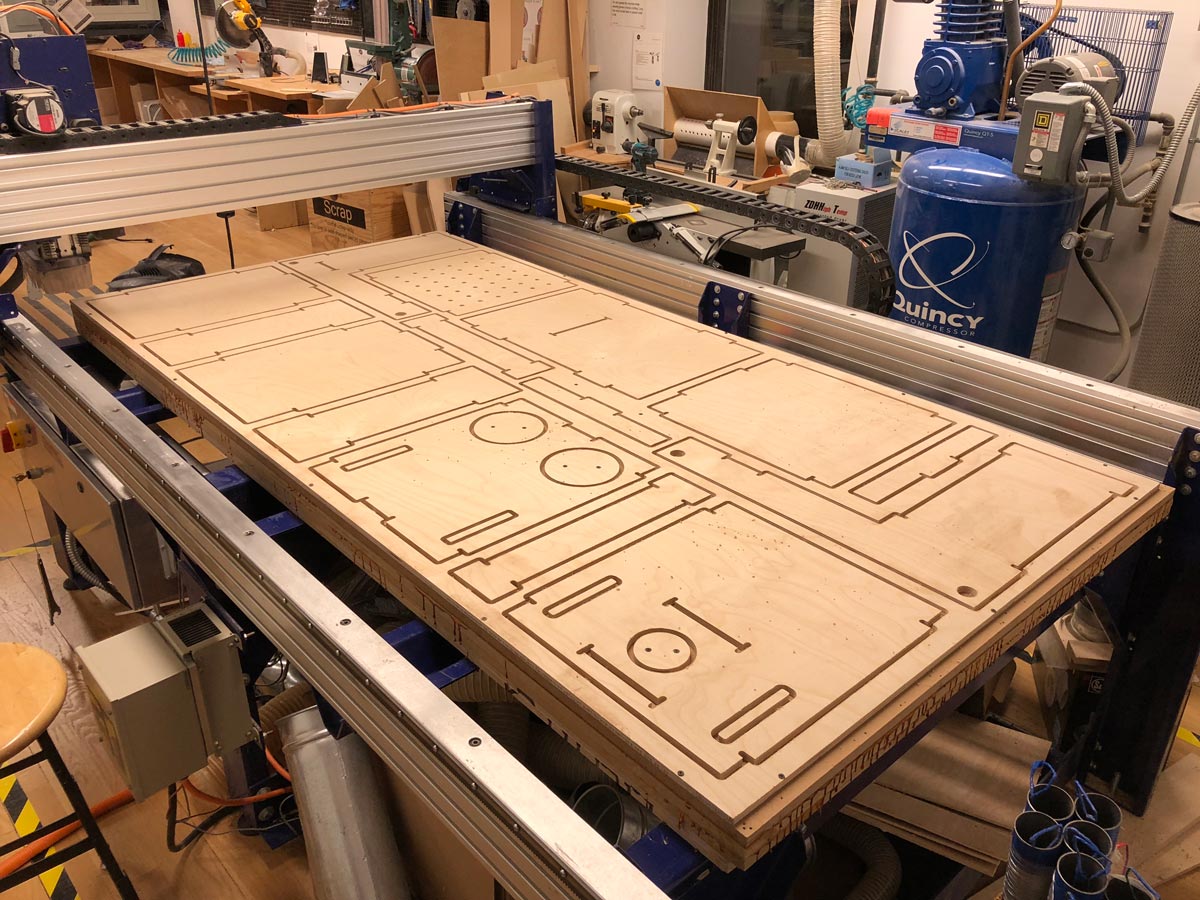
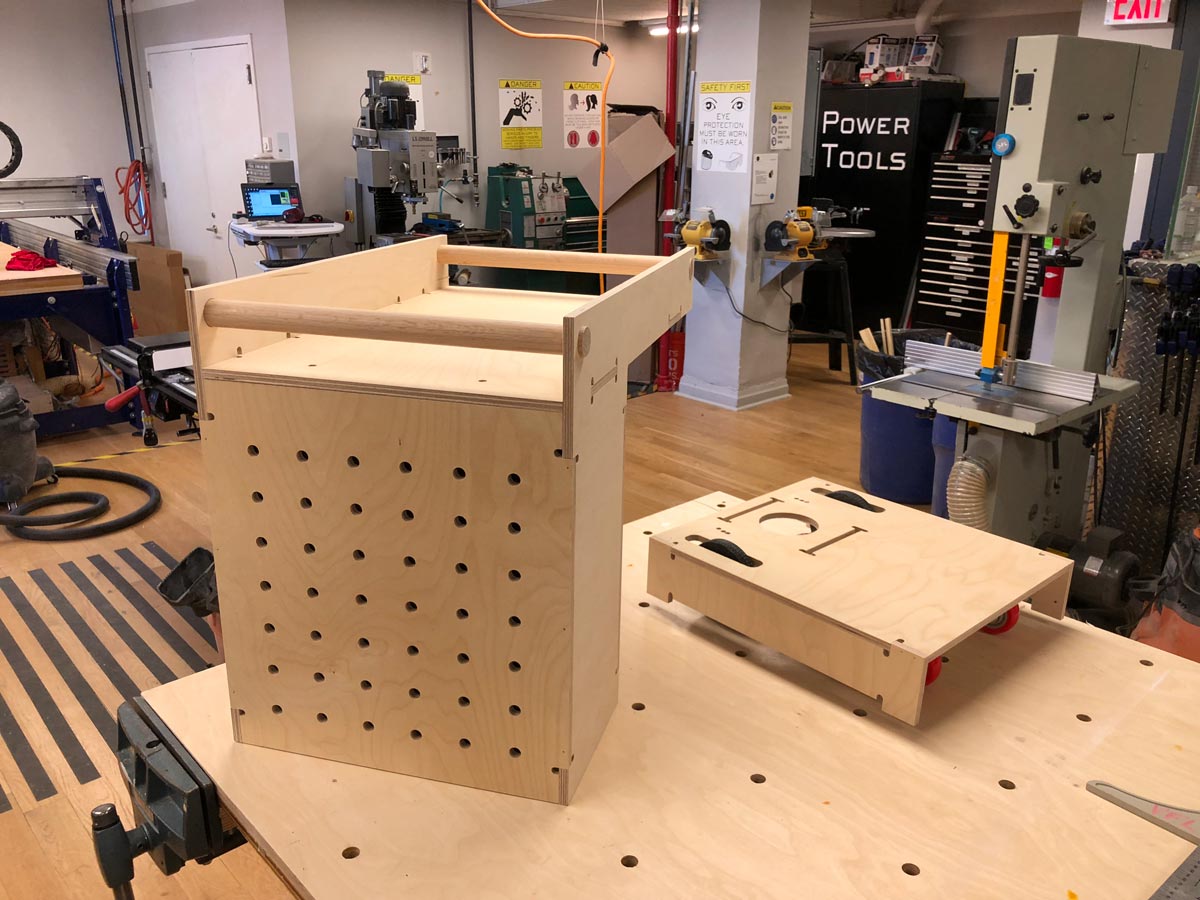
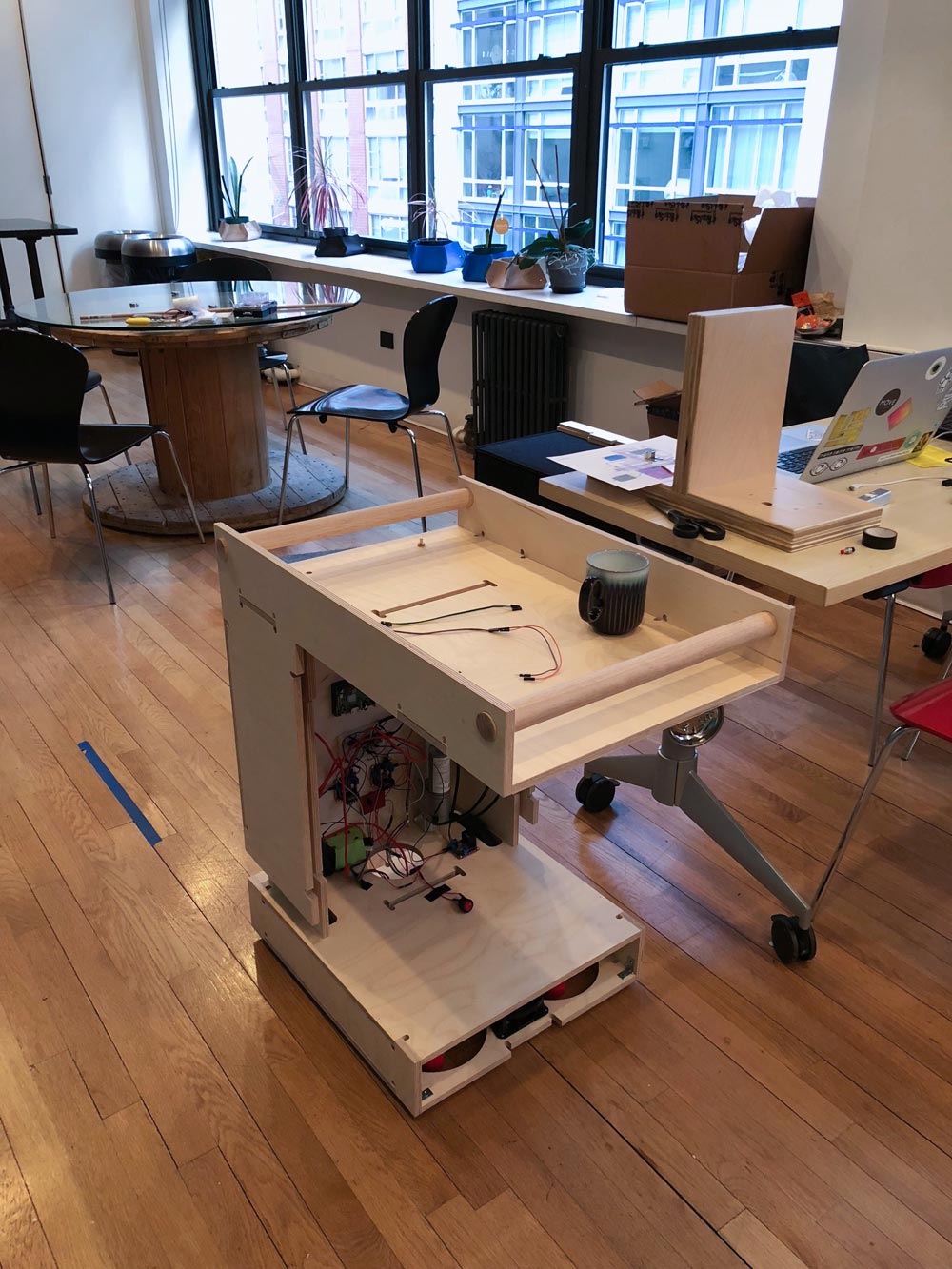
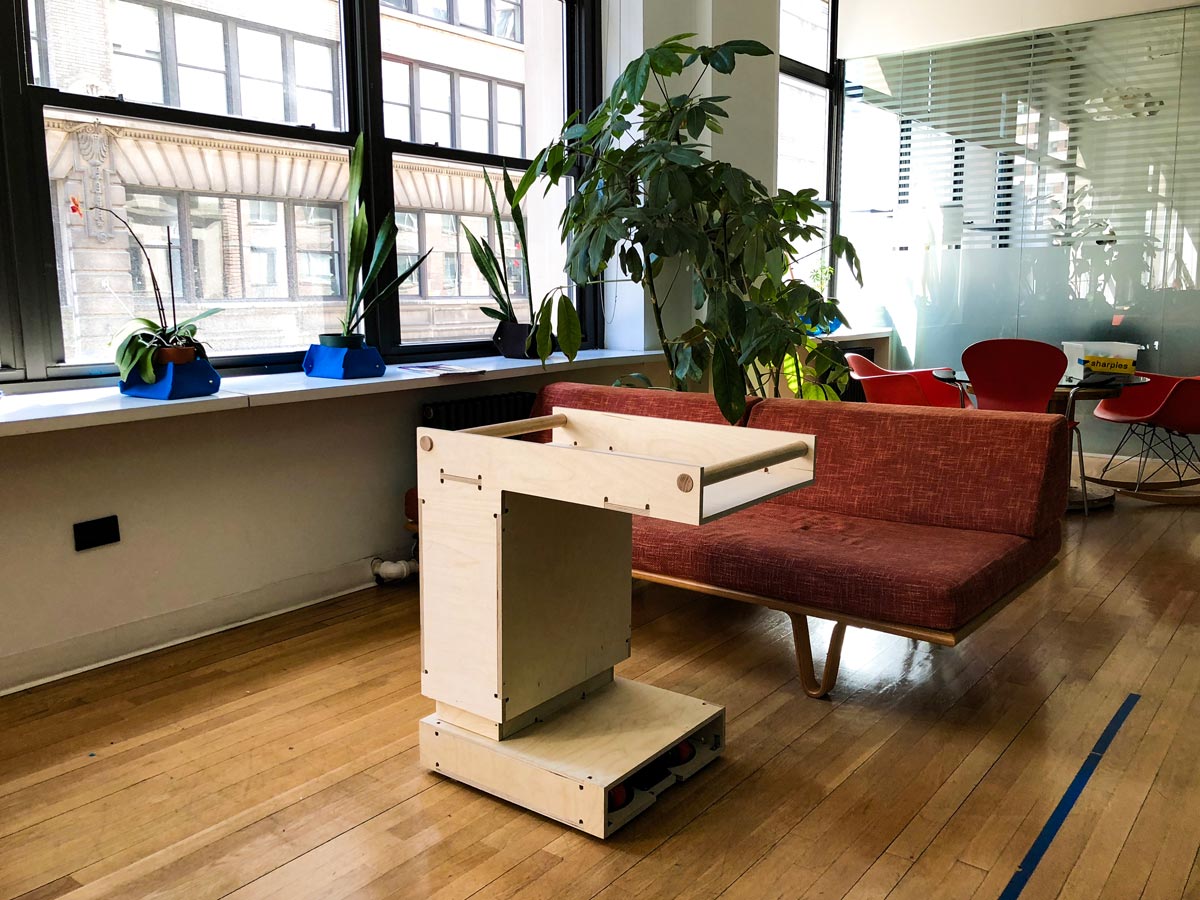
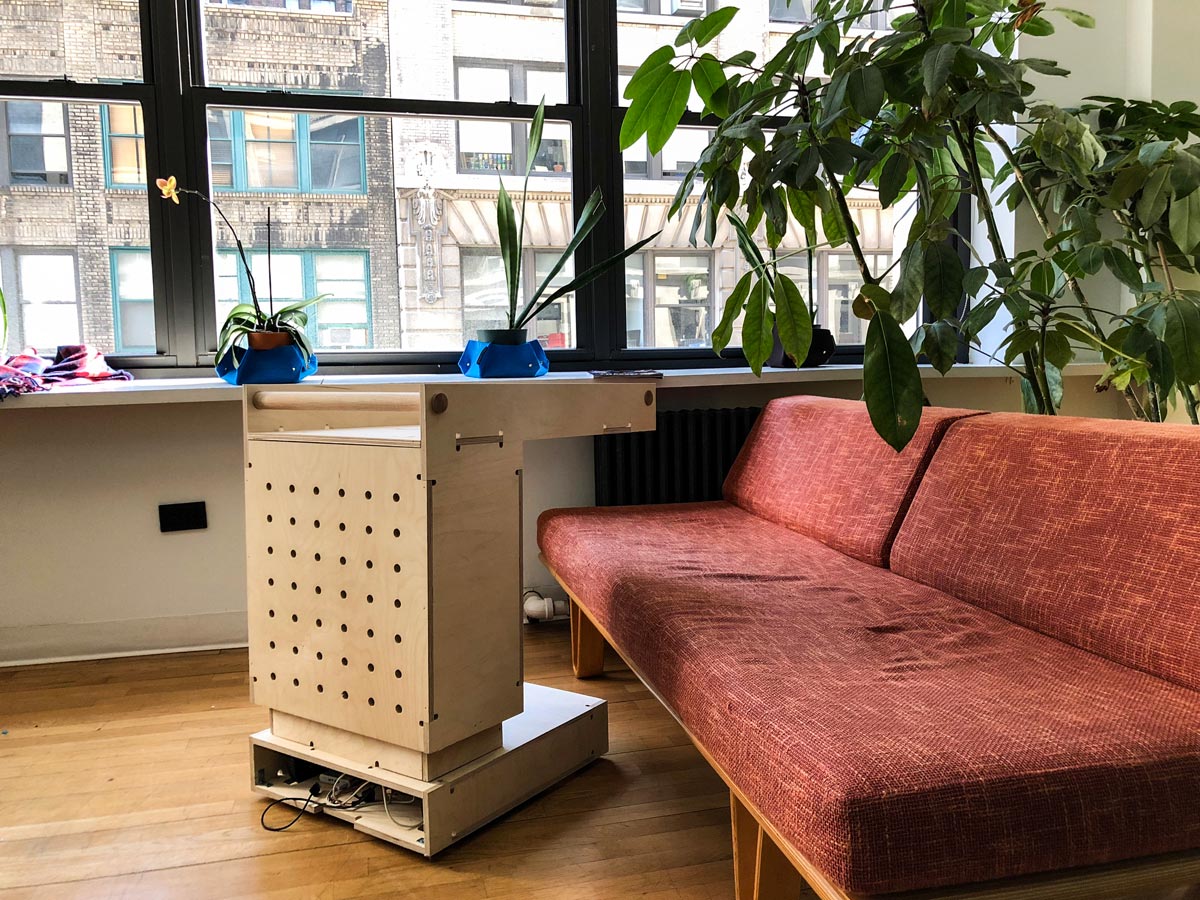
What next?
My latest prototype is not practical. If one were to try and actually lean on it to help them stand up, it would either tip over or roll away. The ledges on the side are too tall for people to reach over. The center of gravity is much higher than it should be. And I haven't figured out a simple charging system and voice commands.
I plan to build an improved prototype with a metal frame, voice controls, and neater power management. If you're interested in working on this or funding it, please reach out!